The following are the best meals I had in Madrid in 2022.
DIVERXO
This is one of the most exciting restaurants to dine in Spain, if not the Western hemisphere, for me right now. I am not saying the best, which is a hard claim to make, but an amazing place to experience some unique combinations of flavors which seem incongruent with each other, but end up creating some taste explosions in a positive sense. 10 years ago I had written a long review of this restaurant and gave 18/20. Now it is even better.
The success derives from three fundamental properties of chef Dabiz Muñoz’s cuisine. First, he has a unique style, somehow inspired by Asian street food, but he does not follow any trend, does not utilize trendy gadgets, and does not spare any expense when selecting the components of his dishes. His ingredients are absolutely top notch as Spain is a privileged country in this regard, and Muñoz takes full advantage of it, like Bittor of Etxebarri. But unlike the latter, his cooking is by no means minimalist. On the contrary, he reminds me of Gagnaire in his maximalist and baroque approach to his cuisine, but he pulls it off better than Gagnaire. I think of this cuisine as a very elaborate “imperial palace” cuisine of a past empire. Perhaps my imagination is running too wild, but when one experiences Muñoz’s grandiose dishes in conjunction with matching wines selected by an excellent sommelier, I can’t help but think that this is an amazing gastronomic experience.
The menu consists of several sequences of courses loosely organized around a given theme or ingredient. But, there is not necessarily a centerpiece in the dishes. We had about 15 sequences of courses, each with a different wine, and two desserts. Descriptions in the written menu give only a vague idea of the dishes. Overall I scored all of the dishes at least 18/20, some 19/20, and five of them 20/20. These are amazing scores.
Let me give three examples. One dish is red tuna. The description reads “Red tuna with tomato. Cured red tuna belly with homemade red tomatoes consommé. 24 hours cooked tuna marrow marinated with yellow tomatoes, calamansi and yellow chili”. The dish contained different parts of the tuna (belly, sirloin, cheeks, etc.), all treated/cured differently. Their inherent fattiness and sweetness are brought into focus by using different kinds and textures of tomatoes as a condiment. (The tomato reduction blew my mind.) The marrow is actually deep fried bone marrow that adds further richness to the dish. Overall the dish is salty, fatty, sweet with the right amount of acidity. Obviously, this is a very umami-rich dish (possibly with few drops of garum), but it is not cloying. It is refreshing. An excellent Valdespino Amontillado VORS is paired with the dish. It works.
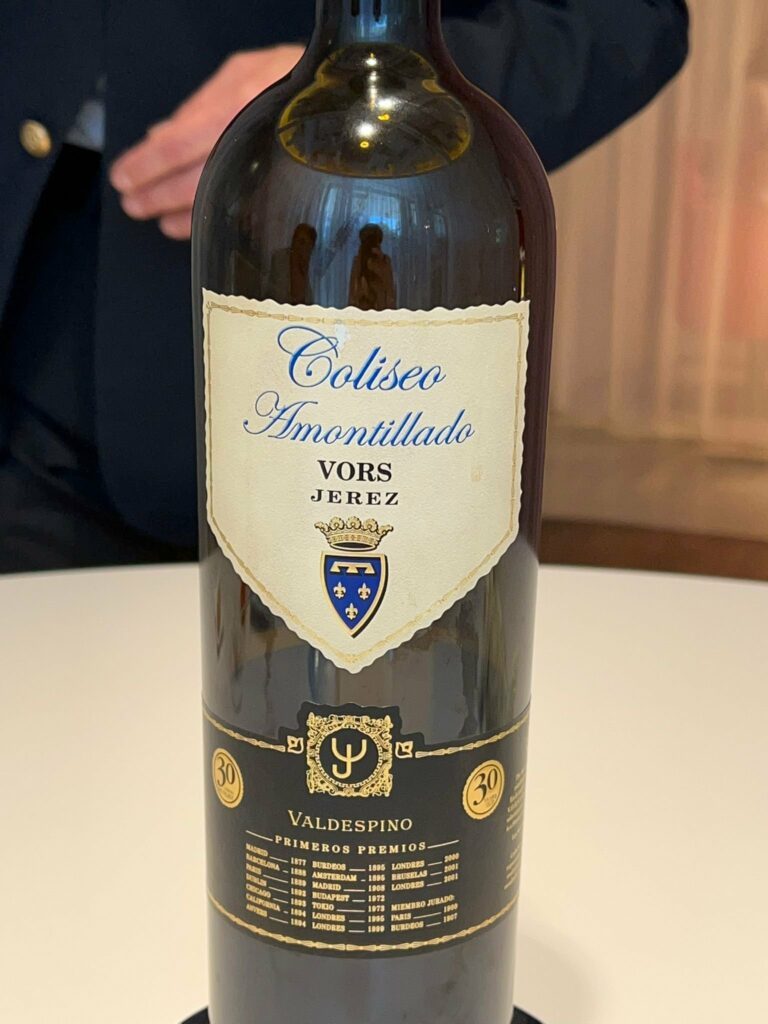
Muñoz is an expert in concocting multi-dimensional and layered taste combinations, where individual ingredients also shine. Both baby eel and lamb dishes are among a dozen or so that still titillate my palate when I think of them.
It should not be easy to create a culinary masterpiece from frozen eel. But “crunchy texture ceviche” was such a masterpiece: “Baby eel sashimi from the Mino river with cockles, tree chile aquachile, red vermouth and calamandin”. A few drops of calamandin (a kind of Asian mandarine which is similar to calamansi) are squeezed onto crunchy baby eels-angulas and cockles, which are bound by a subtle and spicy carbonara sauce (egg and bacon), that contains Mexican peppers (a nod to paprika in the classic eel preparation cooked in a casserole with fried garlic and guindilla hot chile peppers). The whole thing sounds crazy, a hodge-podge of dissimilar elements and cuisines, but the result is a harmony created from contrasting flavors and textures. A pure, intense, saline Albarino with high acidity and a crunchy texture went well with the dish (2020 Acios da Xest-e-Irina). In my experience, this was perhaps the most unorthodox but best ceviche to date.

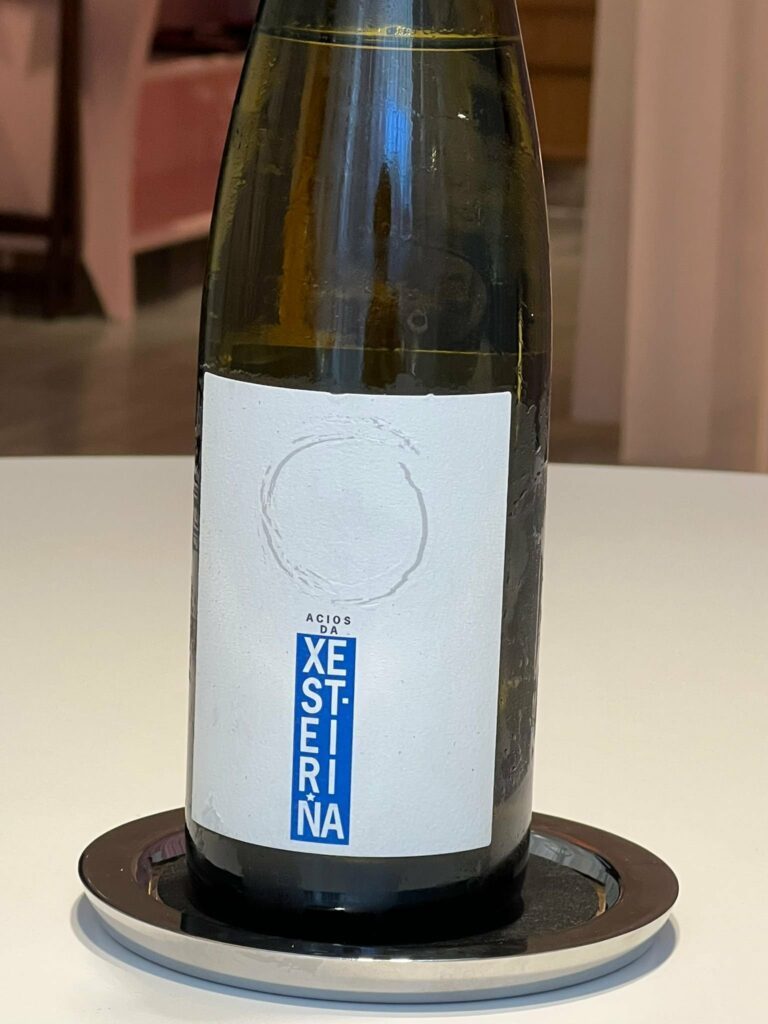
Equally unorthodox and equally good was the second part of the dish: “Warm sashimi with upside down fried baby eels, rock mussels, veloute of Riesling, enoki mushrooms and grilled cuttlefish”. Forget the awkward translation. The dish features very fresh, tip of the finger sized, baby octopus (pulpets), and seppioline and eels bound together with a creamy-sweet Riesling veloute. The dish was completed on the table by pouring hot olive oil to cook the raw fish when it was served. With this dish the sommelier poured 2007 Eulogio Pomares Colleccion 75th anniversary from Zarate. This was a very different Albarino than the previous one. It was more round, fat, and grassy, with a fuller and velvety mouth feel and complemented the dish well.

The lamb dish was also amazing. I am quite experienced with various preparations and species of sheep, but I had never seen this particular breed. In Spanish the name is Agnei Iberico. It originates from Aragon. The lamb is slaughtered when it is about four to five months old after being fed with cereals, like sunflower seeds and corn. The distinguishing property of this lamb is that Agnei Iberico tastes very rich as their oleic acid is similar to an Iberian pig fed with acorns. After my first bite I noted down “this is the lamb equivalent of A5 Omi Wagyu!”.


The description of the dish was playful and slightly misleading as it said: “Aragon forest moistures Iberian agnei lamb skirt steak roasted in the ambers of the sarmiento. Broth of the roasted lamb with its stewed cheek. Buttermilk with Pyrenean herbs oil and black garlic gnocchis. Lamb fried milk with ponzu sauce”. Lamb fried milk turned out to be the best part, the creamy brain (if I close my eyes I could say it is cod milt, called shirako). The sweet cheek confit and the marbled rack of lamb (costillar) were extremely rich tasting and gelatinous, but somehow the fat did not feel excessive and heavy. This may be partly due to the way the lamb has been fed, but one should also give credit to the chef. Like great sushi masters who keep the richness of the fattest part of tuna, o-toro, but render it elegant, Muñoz brought out the best in Iberian lamb without saturating our palate. This dish was a tour de force! It was ably paired by sommelier Lilian with 2000 Cos d’Estornel, a mature Bordeaux with wild mushroom and underbrush notes.
Overall, DiverXO is not for the shy eater, but for me it is a destination place.
EVALUATION: 19.5/20
ESTIMAR
This is possibly the best seafood temple in a city with great seafood. They have a remarkable supply chain, bringing fresh products mostly from Catalonia. Cigalas (slippy lobster) from Cap de Creus and gambas rojas from Palamos taste like the sea, and they are handled perfectly in a classic a la plancha style. Some dishes, such as “sea urchin with red shrimp and caviar” and “bikini”, i.e. a sandwich with salmon rillettes and caviar, are sophisticated, but not fussy.
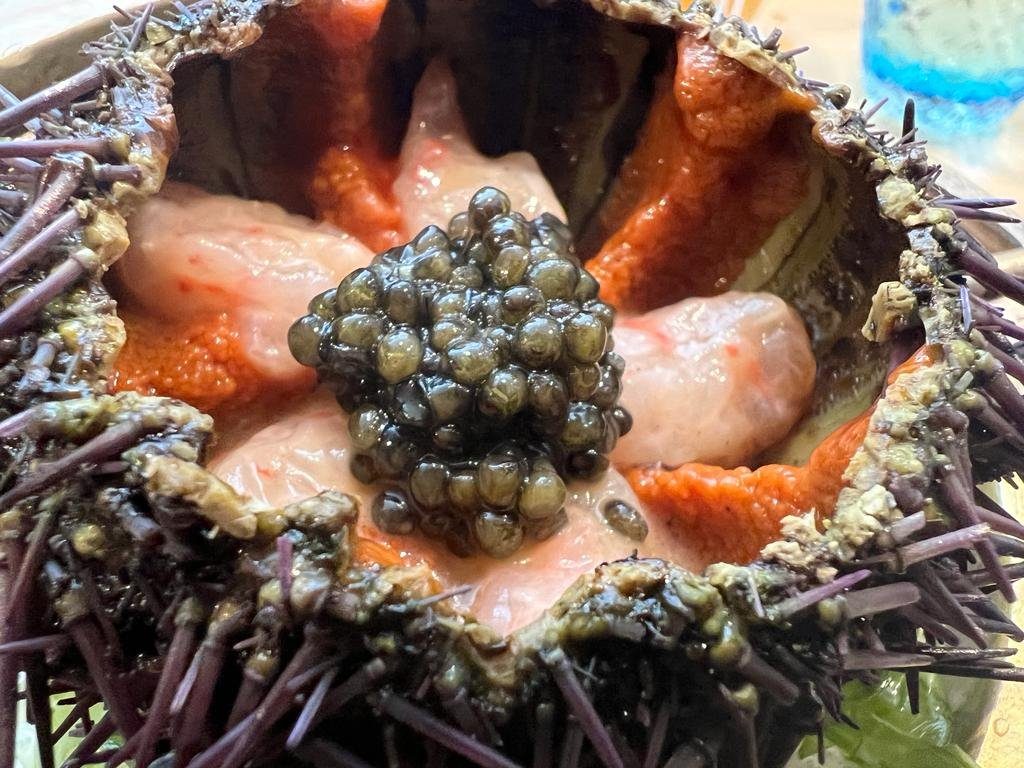

Another favorite here is Cantabrian anchovy with tomato bread. While raw cigalas “El Bulli style” is less convincing than the cooked ones, the percebes and the almejas with green sauce are as good as they get. Whole cooked fish Basque style is quite good, but not on par with Elkano or Ibai. I liked the desserts, but I cannot say that they are superlative.
EVALUATION: 17/20
SACHA
Who cannot fall in love with Sacha? As a person, he is kind and transparent, and his namesake restaurant is possibly one of the best Spanish-French comfort food restaurants that you can find anywhere. I will never get tired of some of his classics: The false ravioli (wrapped in thinly cut cuttlefish) with sea urchins; tortillas with ingredients of the season; oyster escabeche; bone marrow with steak (not the other way around) in a winey sauce with rosemary.


When the ambiance is so cozy and consistency in the correct execution of the dishes is the norm, one can forgive the fact that Sacha works with good but not great ingredients. What he has done has worked so well and made so many of us happy over the years. There really is no need to upgrade.
EVALUATION: 15/20
BARRERA
This restaurant is like home cooking, provided that the angels cook. I still dream of the way she cooked pork jowl with potato, crunchy, fatty and delicious. It is better than any pork belly (jowl has larger layers of fat and meat than the belly) and her style of cooking on low heat using a skillet gave a better result than the ubiquitous sous-vide cooking of fatty meat. Her partridge escabeche and various aubergine preparations were also quite good.


But besides pork jowl, the “piece de resistance” is the oven baked kid. We first sampled the baby goat’s kidneys with confit onions, and then the kid itself. She than served the delicate brain empanada, and finally the brain fried in phyllo. 2002 Clos Rougeard “Le Bourg” was a worthy match for the tender and flavorful kid. (We brought the wine.) Homemade lemon meringue pie was an apt mouth cleaner.
EVALUATION: 17/20
GARCIA DE LA NAVARRA
We love the vegetable dishes in this restaurant. We started with white asparagus served with chopped eggs and mayonnaise. They were very good. Borajas with green beans and little pieces of jamon were equally fresh. The baby sweet peas were barely cooked and as good as the preparations in season (April-May) in top restaurants, such as Etxebarri and Elkano. Their classic dish, which is always on the menu, is “pisto”: A melt in the mouth mélange of red and green peppers, tomato, courgette and olive oil. It is a great stew reminiscent of the French ratatouille, but without the eggplant.


The ingredient quality is very good here, and they have an impressive and fairly priced wine list. We selected a Rias Baixas Albarino. The 2020 Acios de Xest-en-Irina had laser-like acidity and good precision.
EVALUATION: 16/20
DESDE 1911
This is a very sophisticated restaurant with top level service to match, but somehow it fell short of our expectations. The way they handled fish is controversial. The fish of the day was the Rey fish which is a great fish. They cook it in a wood fired oven, but then they remove some of the best parts, including the head to prepare a sauce using a press (like the classic style of “canard a la presse”). This system works for game birds. For fish there is a tradeoff between extracting the collagen to use in sauce mixed with olive oil, vinegar and salt, and losing the delicious parts of the fish. Nevertheless, the preparation makes great spectacle!
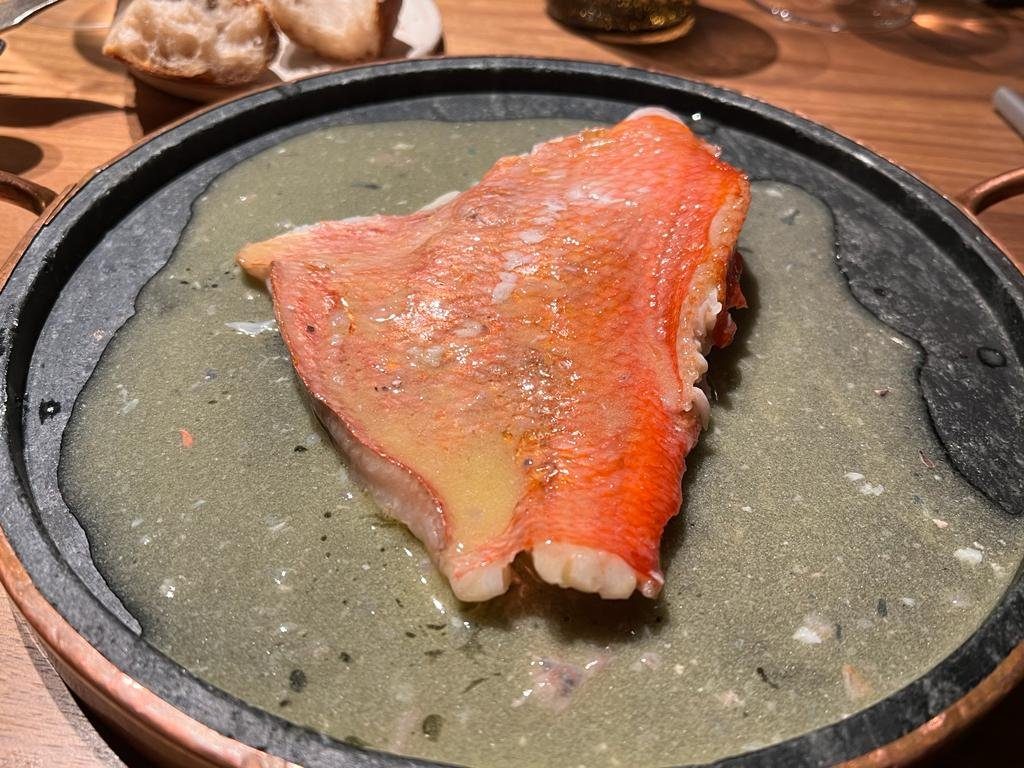
The dish that impressed me most was the Iranian Beluga caviar, served with an amazing brioche. This was better than Estimar’s version. We also had lobster, red prawns, and espardeñas, in small portions. The chef is inspired by “sea and earth” combinations which are typical in starred restaurants. They were good and the ingredient quality was high, but they failed to linger in my memory. The simplest of the dishes, “coquinas and navaja,” two different types of clams, was the best dish.
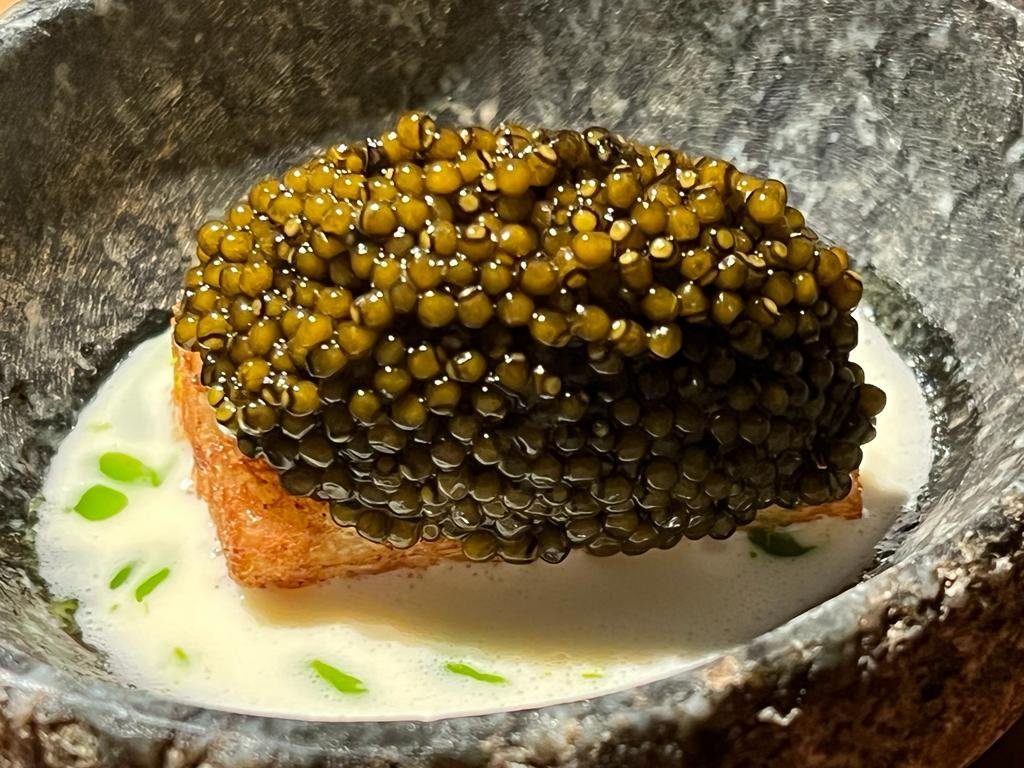

They really need to improve the wine list. The selection of white wines is very limited. The wine list is composed of international style Spanish red wines and is missing all the exciting developments in Galicia, Andalucia, the Canary islands, and elsewhere.
EVALUATION: 15/20






Well written as always – agree on DiverXo – I scored 1911 higher✌️
I am impressed with your post here is a new post and you have prepared a new recipe not everyone can do it but you have done it I think you will become another successful person in life.
Marvellous reviews Mr. Milor. I enjoyed reading the post which made me search for the restaurants for my upcoming Madrid trip. Thanks a lot. A fan from Turkey.